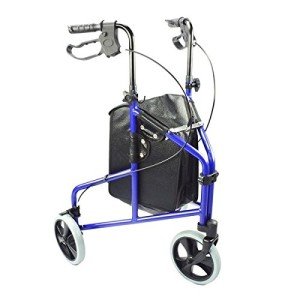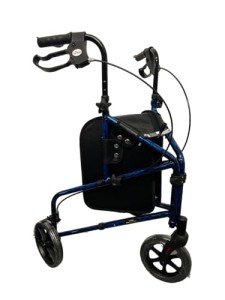mobility-aid1191
mobility-aid1191
What’s The Job Market For Handicap Walker Professionals?

Understanding Handicap Walkers: Types, Benefits, and Usage
Handicap walkers, also frequently called mobility walkers or simply walkers, act as crucial aids for individuals with mobility challenges. These gadgets provide physical support and stability, allowing users to walk more confidently and independently. This post dives into the numerous kinds of handicap walkers, their benefits, and crucial factors to consider when selecting one.
What is a Handicap Walker?
A handicap walker is a device created to assist people who have difficulty walking due to age, illness, or disability. Walkers assist users keep their balance, avoid falls, and recuperate mobility. Unlike canes, which offer minimal support, handicap walkers typically offer a more comprehensive base of stability, making them suitable for more substantial mobility challenges.
Types of Handicap Walkers
Handicap walkers come in various designs, designed to meet the unique requirements of users. Below is a breakdown of the most typical types:
| Type of Walker | Description | Ideal User |
|---|---|---|
| Requirement Walker | A lightweight frame that requires lifting to move. Normally has rubber tips for traction. | Those who can raise the walker and have moderate balance concerns. |
| Wheeled Walker | Functions 2 wheels at the front, enabling much easier mobility without lifting. | Users who can maintain stability and need more support while walking. |
| Rollator Walker | Comparable to wheeled walkers but includes hand brakes and a seat for resting. | People needing a portable resting choice with boosted mobility. |
| Bariatric Walker | Particularly created for heavier individuals, offering enhanced frames and bigger hand grips. | Heavier users needing extra support and stability. |
| Kid Walker | Personalized models for children to aid in their development and mobility. | Kids with developmental delays or mobility obstacles. |
Benefits of Using a Handicap Walker
Numerous users find that handicap walkers substantially enhance their lifestyle. Here are some benefits:
1. Increased Stability
Handicap walkers offer a sturdy assistance structure, which helps prevent falls and increases users’ confidence when walking around.
2. Improved Mobility
Walkers make it simpler for people with mobility restrictions to navigate stairs, irregular surface areas, and other difficult environments.
3. Independence
Using a walker allows individuals to carry out daily activities individually, whether it’s walking your home or going shopping.
4. Discomfort Relief
Walkers improve posture and disperse weight more uniformly, possibly minimizing discomfort in joints and muscles throughout movement.
5. Social Engagement
By helping with mobility, walkers enable users to take part more actively in social events, family events, and community activities, cultivating a sense of belonging.
Essential Considerations When Choosing a Walker
Choosing the best handicap walker is crucial for guaranteeing safety and comfort. Below are essential factors to think about:
-
User’s Height: Walkers come in various heights. It’s necessary to choose one that allows the user to stand upright with a small bend in the elbows when holding onto the manages.
-
Weight Capacity: Assess the weight capacity of the walker, particularly for bariatric alternatives, to guarantee it suits the user’s requirements.
-
Portability: If the walker will be utilized regularly in various places, consider designs that can be quickly folded or transferred, such as rollators.
-
Functions: Some walkers consist of additional features like cushioned seats, storage baskets, and adjustable handles. Examine which features are most helpful for the user.
-
User Preferences: The person’s convenience and choices must likewise play a significant function in the choice. Evaluating different designs might assist determine the best fit.
How to Use a Handicap Walker Effectively
Utilizing a handicap walker properly guarantees safety and optimizes its benefits. Follow these actions for safe use:
- Adjust the Height: Make sure the walker is gotten used to the appropriate height for the user.
- Support the Walker: Place the walker in front while making sure all four rubber tips or wheels touch with the ground.
- Use Proper Techniques: Move the walker forward about one action length, and after that enter the walker while keeping the weight balanced.
- Preserve Good Posture: Stand straight and make use of the walker for assistance, not leaning exceedingly on it.
- Practice Regularly: Encourage users to practice walking with the walker routinely, assisting to construct self-confidence and enhance balance.
Often Asked Questions (FAQs)
1. What is the difference in between a basic walker and a rollator?
Requirement walkers require the user to lift them with each action, while rollators have wheels and allow the user to push them forward without lifting. Rollators also generally consist of brakes and may have a seat.
2. Are handicap walkers covered by insurance coverage?
Protection for handicap walkers can differ based on an individual’s insurance coverage plan. It is a good idea to contact the service provider for specific information concerning protection and any essential documentation needed.
3. Can kids use handicap walkers?
Yes, there are walkers developed particularly for children that deal with their developmental requirements. It’s vital to select a model that is age-appropriate and offers the required support.
4. How do I keep my walker?
Regularly inspect the walker for wear and tear, including the grips and wheels. Tidy the walker as required and guarantee all elements are functioning properly for safety.
5. When is it time to stop using a walker?
This varies by person. Users must speak with their doctor to examine mobility improvements and talk about whether transitioning to a different mobility aid or moving without help is proper.
A handicap walker can be a transformative tool for people with mobility challenges, offering them greater stability, independence, and improved lifestyle. By comprehending the various types, benefits, and crucial considerations in selecting a walker, people can make educated choices that line up with their distinct needs and lifestyle. Whether for rehab, aging gracefully, or handling impairments, handicap walkers play an important function in promoting mobility and wellness.



